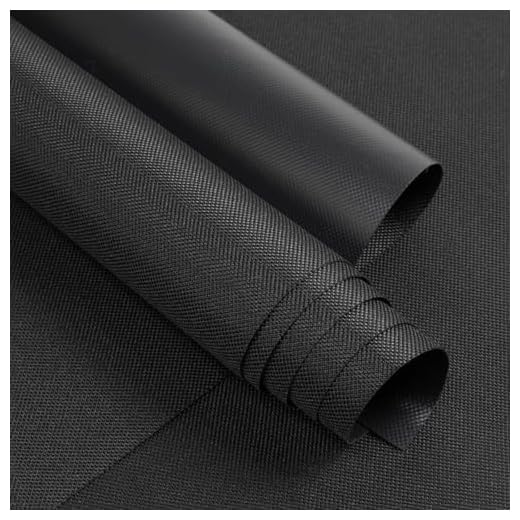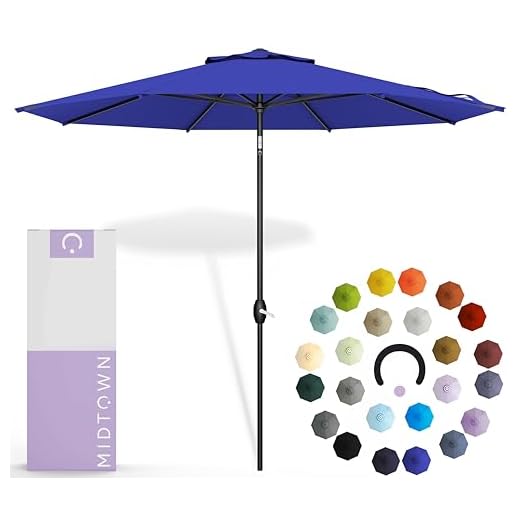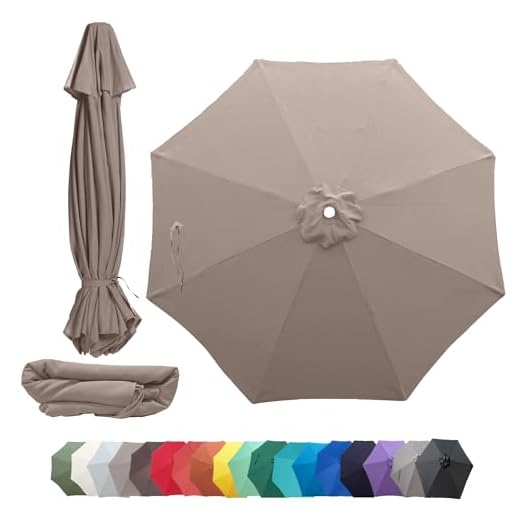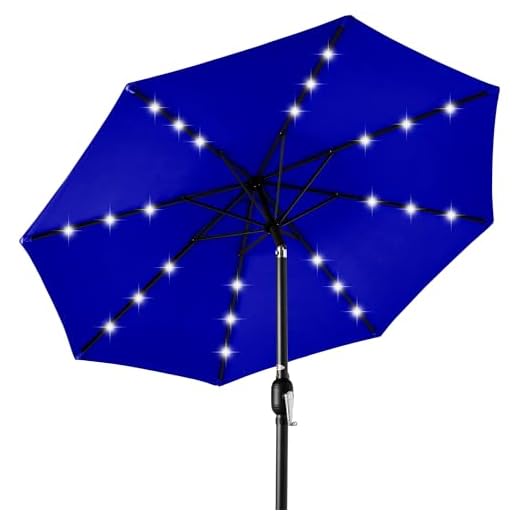
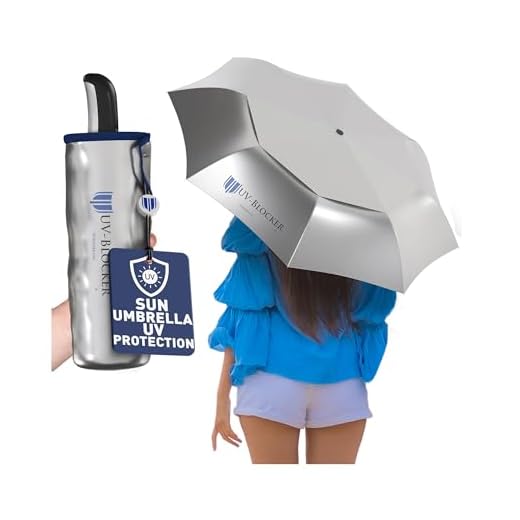
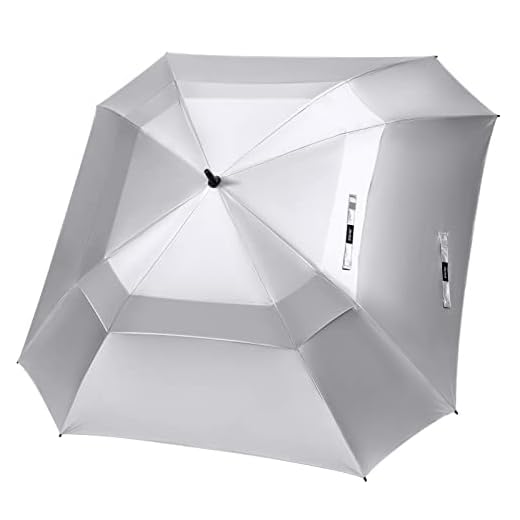
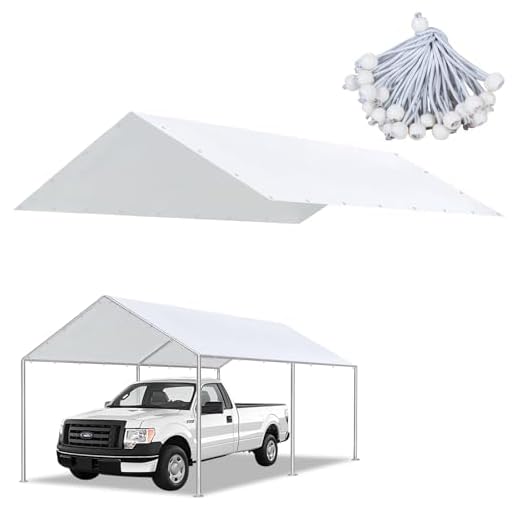
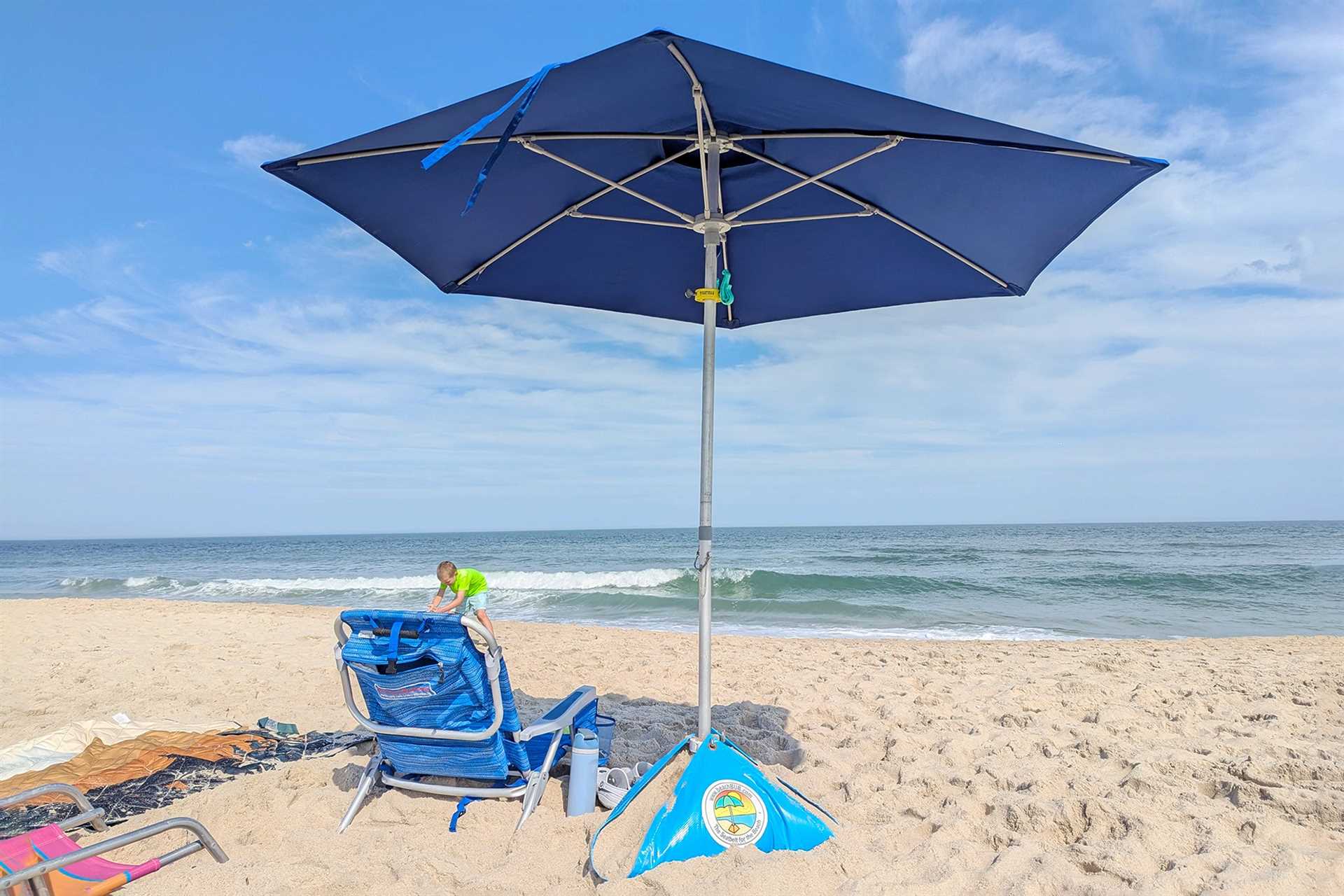
Opt for a solution that combines durability with UV resistance. The right choice of material can significantly enhance your shielding experience against harmful rays. This article will guide you through various options available in the market, focusing on their properties and benefits.
Understanding different types of materials will benefit anyone looking to stay protected during outdoor activities. Whether you’re a frequent beachgoer, a gardener, or someone who enjoys picnicking, knowing which options offer the best defense against sun exposure is crucial.
This piece highlights various textiles, such as polyester, olefin, and acrylic, detailing their effectiveness in blocking UV rays, water resistance, and longevity. You’ll find comparisons, including factors like weight, breathability, and colorfastness, ensuring you make an informed decision that suits your needs.
Best Material Choices for Sun Protection
Choosing the right material for shade structures is critical for optimal sun protection. Look for fabrics that offer high UV resistance, ensuring safety from harmful solar rays.
Solution-dyed polyester is an excellent option, featuring inherent UV blocking properties and durability. This type of material remains colorfast and resistant to fading, even under prolonged exposure to sunlight.
Key Features to Consider
- UPF Rating: Fabrics with a high Ultraviolet Protection Factor (UPF) provide better defense against UV radiation.
- Water Resistance: A water-repellent coating can add functionality, allowing the material to withstand light rain.
- Breathability: Look for breathable options to enhance comfort during hot weather, preventing heat buildup.
Another noteworthy choice is acrylic. This material not only offers superior UV protection but also resists mildew and fading, making it suitable for outdoor use. Its lightweight nature contributes to ease of handling and setup.
Additionally, consider the weave of the fabric. Tightly woven materials generally provide better UV defense than loosely woven alternatives.
| Material Type | UV Protection | Durability |
|---|---|---|
| Solution-Dyed Polyester | High | Excellent |
| Acrylic | Very High | Good |
| Polypropylene | Moderate | Fair |
In addition to material selection, regular maintenance will extend the lifespan of these sun shields. Ensure to clean and store appropriately when not in use to prevent wear and tear.
UV Protection Ratings in Umbrella Fabrics
Choosing materials with effective UV protection is vital for outdoor settings. Fabrics are rated based on their ability to block ultraviolet radiation, which can harm the skin and eyes. The most common measurement for this purpose is the Ultraviolet Protection Factor (UPF). A higher UPF rating indicates better protection against harmful rays.
Materials with a UPF of 15-24 offer good protection, while those rated 25-39 provide very good protection. Fabrics with a UPF of 40 and above are considered excellent at blocking UV rays. It’s crucial to consider these ratings when selecting a cover for outdoor leisure activities.
Factors Influencing UV Protection Ratings
Several factors affect the UV protection capabilities of textiles:
- Material Type: Different fibers have varying levels of inherent UV protection. Synthetic fibers often outperform natural ones.
- Color: Darker colors typically absorb more UV radiation, providing better protection than lighter shades.
- Weave Density: Tightly woven fabrics allow less UV light to penetrate compared to loosely woven options.
- Treatment: Some materials undergo special treatments to enhance their UV-blocking properties.
To ensure maximum safety, evaluate the UPF rating alongside these factors when selecting the right textile for outdoor use. Additionally, regular maintenance can help retain the protective qualities over time.
Comparing Polyester and Acrylic Materials for Sunshade
Polyester and acrylic materials are frequently used for creating effective protective covers against harmful UV rays. Each has distinct qualities that cater to different preferences and needs.
Polyester is known for its durability and resistance to fading. It maintains its color well over time, making it a practical choice for long-term use. Additionally, its water-resistant properties allow for easy cleaning and maintenance, ensuring that it remains in good condition despite exposure to the elements.
Acrylic Benefits
Acrylic, on the other hand, offers superior UV protection. Its fibers are designed to block a higher percentage of UV rays, making it a popular option for those seeking enhanced sun safety. Moreover, acrylic is often softer to the touch and can provide a more comfortable experience when in contact with skin.
When comparing these two materials, consider the following factors:
- Durability: Polyester tends to withstand wear and tear better than acrylic.
- UV Protection: Acrylic provides higher UV resistance, making it ideal for intense sun exposure.
- Color Retention: Polyester is less prone to fading compared to acrylic.
- Comfort: Acrylic is generally softer and more pleasant against the skin.
Ultimately, the choice between polyester and acrylic depends on specific needs and preferences regarding durability, comfort, and UV protection.
Water Resistance vs. Sun Protection: Finding the Right Balance
Choosing a protective canopy involves understanding the trade-offs between water resistance and UV protection. Materials designed to repel moisture often prioritize durability and strength, while those aimed at shielding from sunlight focus on light weight and UV-blocking capabilities.
For optimal performance, consider a blend of materials that offer both water resistance and sun shielding. Look for items treated with special coatings that enhance both properties, ensuring you stay dry and protected from harmful rays.
Material Characteristics
When evaluating options, pay attention to the following characteristics:
- Waterproof Coating: A polyurethane or silicone coating can provide significant water resistance.
- UV Protection: Look for a fabric with a high UPF rating, which indicates its effectiveness at blocking ultraviolet rays.
- Breathability: Materials that allow air circulation reduce heat buildup while maintaining protective qualities.
Additionally, consider weight and flexibility. Heavier materials may offer better durability against wind and rain but can compromise portability. Lightweight options, while easier to carry, may not withstand harsh weather conditions as effectively.
Maintenance and Longevity
Regular maintenance enhances both water resistance and UV protection. Follow these guidelines:
- Clean your cover periodically to remove dirt and debris that can degrade protective coatings.
- Store it properly when not in use, avoiding prolonged exposure to sunlight and moisture.
- Reapply protective sprays or treatments designed to restore water and UV resistance, extending the lifespan of the material.
Striking a balance between these two protective functions will ensure a more versatile and durable solution. Investing time in understanding material properties will lead to better choices tailored to specific needs.
Breathability and Comfort: Key Features of Canopy Materials
Choosing appropriate materials for a canopy is paramount for maintaining comfort during outdoor activities. Breathable textiles allow air circulation, reducing heat buildup while providing a more enjoyable experience. This feature is particularly important in warm weather, where high temperatures can lead to discomfort.
Comfort is further enhanced by the lightweight nature of certain materials, which makes them easier to manage and transport. A good balance between breathability and weight ensures that users can enjoy prolonged periods of shade without feeling weighed down or overheated.
Factors Affecting Breathability
Several characteristics influence the breathability of a canopy material:
- Weave Structure: Tighter weaves may block airflow, while looser weaves promote ventilation.
- Moisture Wicking: Some textiles are designed to draw moisture away from the body, enhancing comfort.
- UV Resistance: Fabrics that resist UV rays often have a denser structure, impacting their breathability.
When selecting materials, consider how these factors align with your specific needs. A material that offers both breathability and UV protection can enhance outdoor experiences significantly.
Conclusion
In summary, the interplay between breathability and comfort is critical when selecting materials for canopies. Prioritizing lightweight, moisture-wicking, and well-structured textiles will lead to more enjoyable outdoor experiences, allowing users to stay cool and comfortable while protected from harsh elements.
Durability Factors in UV-Resistant Fabrics
When selecting materials that provide protection against UV radiation, several factors significantly influence their longevity and effectiveness. One primary consideration is the type of fibers used in production. Synthetic fibers, such as polyester and nylon, are commonly favored due to their inherent resistance to degradation from sunlight exposure.
Another critical aspect relates to the weave of the material. A tight weave can enhance durability by reducing the likelihood of UV rays penetrating through the fabric. Additionally, the weight of the textile plays a role; heavier fabrics generally offer better protection and resist wear and tear over time.
Key Durability Factors
- Fiber Composition: Materials like polyester and acrylic are often treated with UV inhibitors, improving their resistance to sun damage.
- Weave Density: A denser weave minimizes UV transmission and enhances overall durability.
- Weight: Heavier textiles can withstand environmental stressors better than lighter alternatives.
- Coatings: UV-blocking coatings can extend the lifespan of the fabric, offering additional protection against fading and degradation.
In addition, regular maintenance can prolong the life of UV-resistant materials. Cleaning and proper storage protect against mold and mildew, which can compromise fabric integrity. Observing these factors ensures effective performance and longevity, making the investment in quality textiles worthwhile.
Care and Maintenance Tips for Long-Lasting Shade Canopies
Regular cleaning is critical for maintaining the longevity of your shade canopies. Use a soft brush or cloth to remove dirt and debris. For deeper cleaning, mix mild soap with warm water and gently scrub the surface, ensuring to rinse thoroughly to prevent soap residue.
Protect the canopy from harsh weather conditions. When not in use, store it in a dry place or use a cover to shield it from rain, snow, or intense sunlight. This practice minimizes wear and prolongs its lifespan.
Maintenance Checklist
- Inspect for damage regularly, including tears or frayed edges.
- Reinforce seams and edges if needed to prevent further damage.
- Apply UV protectant sprays to preserve color and fabric integrity.
- Keep the frame clean and free from rust or corrosion.
- Store properly during off-seasons to avoid unnecessary exposure.
Following these tips will ensure your shade canopies remain in excellent condition, providing reliable protection for years to come.
Best umbrella fabric for sun
Features
| Part Number | GWFBFB-009 |
| Model | Waterproof Canvas Fabric |
| Color | Black |
| Size | 108x60 inch |
Features
| Part Number | SKY6407 |
| Model | SKY6407 |
| Color | Resort Blue |
| Size | 10ft LED |
Features
| Part Number | 741360281141 |
| Model | 58011 |
| Color | Silver |
| Size | 42" |
Features
| Part Number | G4Free TN21A009A |
| Color | UV Silver |
| Size | 68 Inch |
Features
| Part Number | RC01 |
| Model | 10x20 Ft Canopy Cover |
| Color | White |
Features
| Part Number | 302214 |
| Model | 302214 |
| Warranty | 15-year warranty against uv degradation. |
| Color | Black |
| Release Date | 2007-04-02T00:00:01Z |
| Size | 6' x 15' |
Features
| Part Number | 9-LN-BLK-TER-MIDBLU-N-FBA3 |
| Color | Terylast Fabric - Midnight |
| Size | 9 Foot |
Features
| Part Number | top 9x8 |
| Model | 9ft 8 ribs canopy taupe |
| Color | Taupe |
| Size | 9 ft x 108 inches |
Video:
FAQ:
What is the best fabric for umbrella sun protection?
The best fabric for umbrella sun protection typically includes materials such as polyester and acrylic. These fabrics are known for their UV resistance, which helps block harmful sun rays. Polyester is lightweight and durable, making it a popular choice for outdoor umbrellas. Acrylic, on the other hand, often has a higher UV protection rating and is also resistant to fading, making it ideal for long-term use. When selecting an umbrella, look for those labeled with a UV protection factor (UPF) to ensure maximum sun safety.
How does the color of an umbrella fabric affect sun protection?
The color of the umbrella fabric plays a significant role in its ability to protect against the sun. Darker colors, such as black or navy, tend to absorb more UV radiation, providing better protection compared to lighter colors. However, they can also retain more heat, which might make them less comfortable in extremely hot weather. Lighter colors reflect more sunlight but may not offer the same level of UV protection. Therefore, when choosing an umbrella, consider both the color and the fabric’s UV rating to find a balance between protection and comfort.


